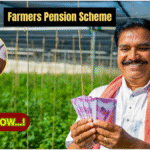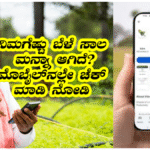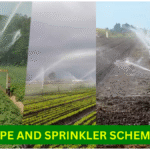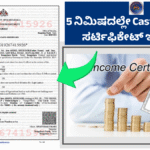Economic empowerment of women plays a crucial role in driving sustainable development across nations. In India, countless women—particularly in rural and semi-urban regions—face barriers such as limited education, societal norms, and financial dependence, restricting their access to employment. To combat these challenges, the Government of India introduced the Sewing Machine Scheme, a focused welfare initiative aimed at enabling women to become self-reliant through skill-based entrepreneurship.
What Is the Sewing Machine Scheme?
The Sewing Machine Scheme is a government-sponsored program that offers sewing machines—either free of charge or at subsidized rates—to women from economically disadvantaged backgrounds. The goal is to equip them with the tools needed to earn an income, promote home-based self-employment, and strengthen their financial standing.
Tailoring, a skill already known to many women or one that can be quickly learned, provides an accessible avenue for economic growth. This initiative recognizes that with minimal investment and basic training, tailoring can become a sustainable livelihood.
Core Objectives of the Scheme
At its heart, the scheme is designed to support women from underserved communities by enabling them to generate income independently. Here’s how it aims to make a difference:
- Creating Livelihood Opportunities: The program addresses unemployment and underemployment among women, especially in remote areas.
- Encouraging Home-Based Enterprises: With access to a sewing machine and foundational skills, women can start tailoring businesses from their homes.
- Boosting Economic Self-Reliance: By earning their own income, women can reduce dependence on others and make empowered life choices.
- Raising Living Standards: A steady income contributes to improved nutrition, healthcare, education, and overall well-being for families.
- Promoting Inclusive Development: Special consideration is given to widows, differently-abled women, and those without formal income sources.
Key Features of the Sewing Machine Scheme
This scheme offers a comprehensive blend of resources, training, and support to ensure meaningful impact:
1. Free or Subsidized Sewing Machines
Depending on the state and local implementation, machines are distributed either at no cost or for a nominal fee to cover administrative expenses. In many districts, the machines are entirely free for eligible applicants.
2. Skill Development and Training
To ensure that recipients can effectively use the machines and turn their skills into income:
- Tailoring courses ranging from a few weeks to several months are provided.
- Training often includes stitching, embroidery, finishing, and basic design.
- Participants also learn essential business practices such as pricing, order handling, and customer service.
- These programs are usually conducted by NGOs, vocational centers, or women’s cooperatives.
3. Focus on Disadvantaged Groups
Priority is given to:
- Women from Below Poverty Line (BPL) households
- Widows, divorced, and single women
- Women with disabilities
- Members of Scheduled Castes, Scheduled Tribes, and Other Backward Classes, depending on state guidelines
4. Age Eligibility
Typically, applicants must be between 20 and 40 years old. However, some states extend this limit up to 45 or 50 years for specific categories such as widows or differently-abled women.
5. Decentralized Implementation
The scheme is implemented at the grassroots level through various local bodies, including:
- District and State Social Welfare Departments
- Rural Development Agencies
- Women’s Development Corporations
- Self-Help Groups (SHGs)
- Partner NGOs and charitable trusts
Eligibility Requirements
To ensure the right beneficiaries receive support, certain eligibility criteria are in place. While these can vary slightly by state, general requirements include:
- Applicant must be a woman and a citizen of India
- Belonging to an economically weaker or BPL household
- Aged between 20 and 40 years (flexible in some cases)
- Preference for widows, women with disabilities, or no formal income source
Income Threshold:
Most states require that the annual family income does not exceed ₹12,000–₹15,000. Proof of income must be submitted from a recognized authority.
Documents Required:
- Government-issued ID (e.g., Aadhaar Card)
- Income certificate
- Proof of age
- Disability certificate (if applicable)
- Passport-size photographs
- Completed application form
How to Apply for the Sewing Machine Scheme
The application process is user-friendly and may vary slightly depending on the implementing agency.
Steps to Apply:
- Obtain the Application Form: Available at local welfare offices or downloadable from official state websites.
- Complete the Form: Fill in personal and income details, along with the reason for applying.
- Attach Required Documents: Ensure all supporting paperwork is included.
- Submit the Application: Hand it over to local offices such as the block development office or women’s welfare centers.
- Verification Process: Officials may visit the applicant’s home to verify eligibility.
- Training Enrollment: If needed, applicants may be enrolled in basic tailoring courses.
- Machine Distribution: Once selected, beneficiaries receive their sewing machines—often during official events or distribution drives.
Benefits of the Scheme
1. Income Generation
Tailoring offers steady demand and flexibility. Women can earn by stitching:
- School and office uniforms
- Casual and formal wear
- Festival and wedding garments
- Accessories like handbags and cushion covers
2. Work-from-Home Flexibility
This initiative is especially beneficial for women who manage households or care for dependents. It allows them to:
- Set up a tailoring space at home
- Serve local customers or partner with nearby shops
- Balance work and family responsibilities effectively
3. Utilization of Existing Skills
Many women already possess basic sewing skills. The scheme enables them to turn this knowledge into a viable source of income.
4. Boost in Confidence
Economic independence uplifts self-worth and gives women a stronger voice in family and community decisions.
5. Pathway to Entrepreneurship
With time, some women scale up their tailoring ventures by:
- Hiring assistants
- Launching local boutiques
- Exploring related services like embroidery or design training
Challenges and Areas for Improvement
While impactful, the scheme does encounter obstacles:
- Lack of Awareness: Many eligible women are unaware of the program’s availability.
- Administrative Delays: Bureaucracy and local politics can slow down distribution.
- Inadequate Training Facilities: Not all regions offer skill-building programs.
- Maintenance and Repair Issues: Limited access to repair services or spare parts can hinder continued use.
Overcoming these challenges will require enhanced communication, improved training infrastructure, and strict monitoring of implementation.
Success Stories: Real Lives Transformed
Rani, Bihar
Rani, a widowed mother of two, received a sewing machine through the scheme. She began stitching school uniforms and quickly turned it into a business, now earning over ₹5,000 per month.
Shalini, Tamil Nadu
Despite being differently-abled, Shalini completed a three-month tailoring course provided through the scheme. She now runs a home-based business and also trains other women in her village.
These stories showcase the powerful and lasting impact the scheme can have on women’s lives.
Looking Ahead: Future Prospects
The government continues to strengthen and expand the Sewing Machine Scheme. Upcoming enhancements include:
- Online Registration Portals for easier applications
- Mobile Tailoring Units to reach women in remote villages
- Integration with Skill Development Programs like PMKVY and MUDRA loans
- Collaborations with Private Sector for training, raw material supply, and marketing
Final Thoughts
The Sewing Machine Scheme is not merely a welfare project—it is a transformative effort that fosters women’s self-sufficiency, encourages entrepreneurship, and supports community upliftment. By combining financial aid with skill-building, it empowers women to take charge of their economic future.
As awareness grows and implementation improves, the scheme holds the promise to uplift countless women, particularly in underserved areas, and contribute meaningfully to India’s vision of inclusive and equitable development.











